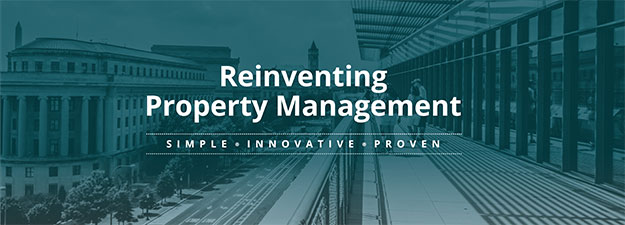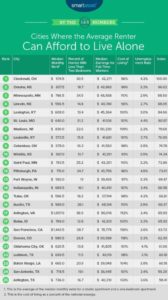
This biweekly sponsored column is written by the experts at Gordon James Realty, a local property management firm that specializes in residential real estate, commercial real estate and homeowner associations. Please submit any questions in the comments section or via email.
Renting property in the D.C. area can be very lucrative when done properly. Unfortunately, many first-time landlords find themselves in time-consuming and expensive situations because they never took the time to learn how to choose the right tenants.
We’ve combined our decades of property management experience to give you the best advice on how to rent your property with the least amount of headaches and highest amount of profit possible.
Assemble Your Team
Even if you plan on managing your own property instead of hiring someone, you’ll need an attorney to help you draft applications, leases and file evictions.
In addition to an attorney, you occasionally will need to hire one or all of the following people to assist you with various tasks:
- Financial professional
- Property manager or real estate agent
- Handyman
- Contractors
Prepare The Property
Once you’ve got your team in place, it’s time to get your property ready to rent. Remember that tenants are less likely to take care of a home than an owner is, so be mindful of this when considering upgrades and improvements.
At a minimum, the home should be free of major structural issues and all systems including plumbing, HVAC and electrical should be working.
Advertise Your Property
The D.C. real estate market has a variety of print and online advertising mediums available for landlords to attract prospective tenants.
Craigslist is among the most popular because of its ease of use and low prices. But it is a breeding ground for scams of all types. Be wary of poorly-written messages from prospective tenants stating they are out of the area and will send you money if you send the keys.
The Rentals section of The Washington Post is more expensive, but attracts more serious prospects. Because it is a regional publication, you’re less likely to get spammy messages from fake tenants.
Other options include large national websites like Trulia and Realtor.com, though these may not produce as many good leads.
Screen Tenants Carefully
Before you even agree to meet a prospect in person, you should have a pre-screening process in place to avoid wasting time on tenants who cannot afford what you have to offer. This is especially true in the D.C. market because housing costs are extremely high compared to the median income of most people in the area.
You cannot assume tenants will always be truthful about their financial situation and other details of their lives. It’s critical that you require a signed application and credit history once you’ve met and they would like to live in your rental.
Even if cashflow is an issue, you cannot move in the first person who comes along with cash in hand to rent your property. The screening process is the most important part of the rental process.
If you perform your due diligence and find the right tenants for your property, things go a lot more smoothly down the road.
Have a Contingency Plan in Place
Even if you’ve done a great job preparing your property and selecting the right tenants, nothing is perfect. Problems will happen.
If you prepare yourself for these problems ahead of time, you’re likely to have less issues keeping your tenants happy and your properties rented.
No matter how prepared you are mentally and financially, there will be curve balls thrown your way at the worst possible time.
Adopt a Long-Term Mentality
Becoming a landlord in the D.C. area is not for those looking to make big money in the short-term. In fact, because of the high cost of real estate in the area, you’re likely not going to make much money in the first couple of years, especially if you just bought the property.
You must look at this as a way to build long-term wealth. When done properly, your profits will steadily rise as you build equity in the property and incrementally increase the rent.
Being a landlord is hard work. If you find yourself constantly struggling to handle your growing portfolio of rental properties, it may be time to hire a property manager. They’ll save you time, money, and the headache associated with self-management.
 Arlington has one of the highest median rent prices in the entire country, yet the county still ranks among the top places people can afford to live alone.
Arlington has one of the highest median rent prices in the entire country, yet the county still ranks among the top places people can afford to live alone.

